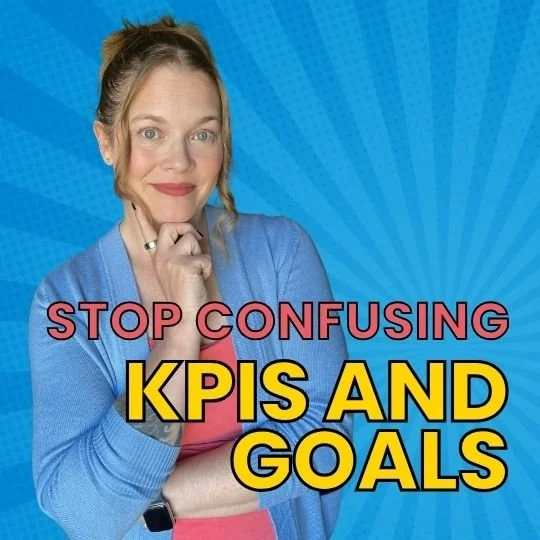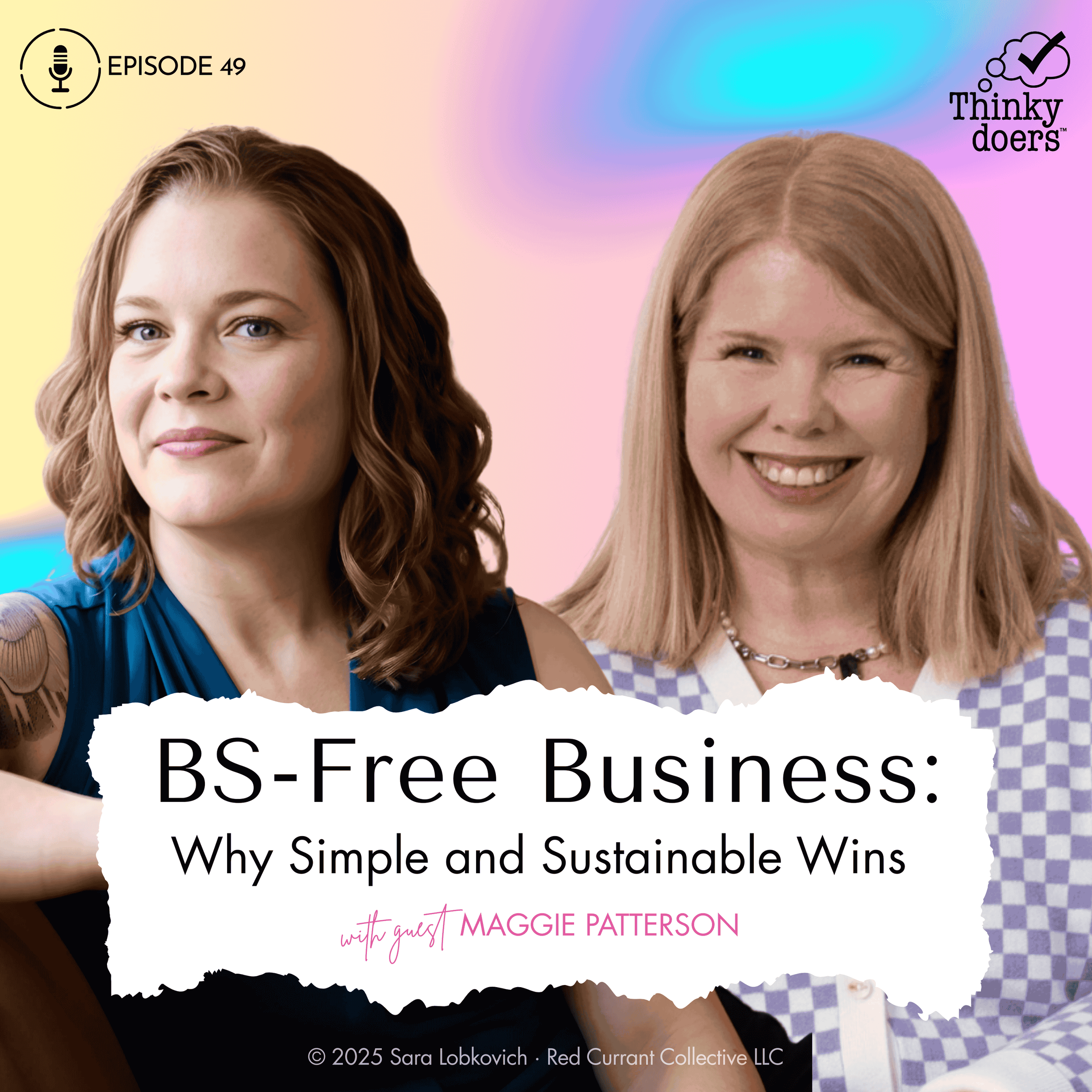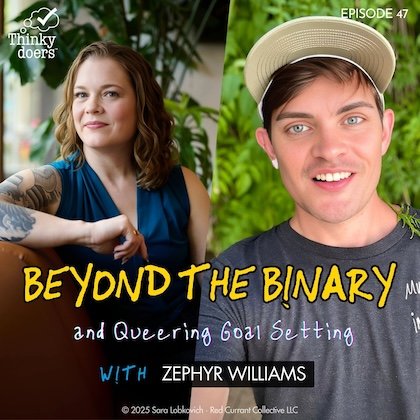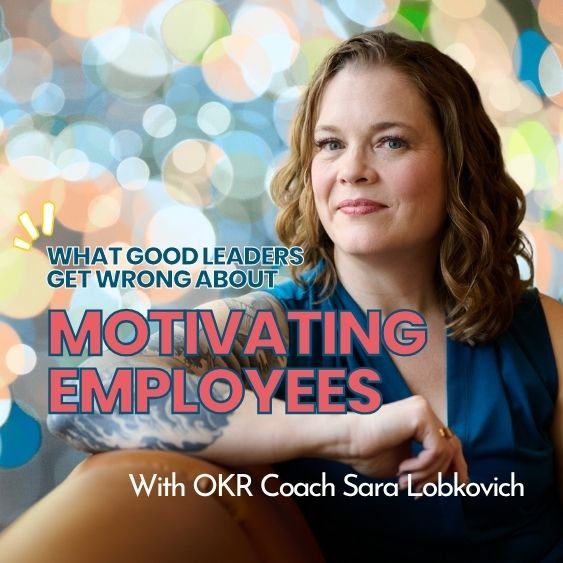
Welcome to the No-BS OKRs™ Blog
Here, you’ll find resources we create to help teams create, implement, and operationalize No-BS OKRs™ (called Evolutionary OKRs® in some workplaces) to set clear goals, stay focused, and build cultures of growth, learning, and high performance.
Featured No-BS OKRs Posts
Curious about the difference between OKRs and KPIs? This post explains how each measurement approach works, when to use them, and why keeping your metrics clear can lead to better business results. Learn how OKRs and KPIs can work together to help you focus on both tracking performance and driving real improvement.
Many OKR implementations fail spectacularly. After training over 2,000 OKR coaches across 300+ organizations globally, I've seen the same chronic issues sink even well-intentioned goal-setting efforts: way too many objectives, activity-focused key results, and "rules for thee, not for me" approaches where senior leadership doesn't participate. This guide shares the battle-tested best practices from the No-BS OKRs methodology—proven strategies that separate high-performing organizations from those struggling with OKR confusion and overhead.
Discover the top OKR mistakes that can derail your implementation and learn how to avoid them for successful goal-setting in your organization.
Newest Thinkydoer Podcast Episodes
What if the thing you've been told makes you "broken" is your biggest business advantage? Serial entrepreneur Peter Shankman shares how he went from "disrupting the class" to building five startups with three exits—all powered by his ADHD brain. Learn why media visibility is the shy entrepreneur's secret weapon and why it's time to stop hiding your different brain.
What if the business you’re building is based on advice that was never meant for you? Maggie Patterson, creator of BS-Free Business and author of Staying Solo, argues that too much business guidance recreates the same extractive systems we left behind in corporate life.
In this conversation, Maggie shares why building around your real capacity—not the fantasy version of yourself—is the key to a sustainable solo business. From spotting harmful marketing tactics to redefining strategy as a superpower for the neurodivergent and introverted, she lays out a framework for creating businesses that actually fit the lives we want to live.
What separates leaders who create lasting change from those who simply manage existing problems? Charles Spinosa, management consultant and author of "Leadership as Masterpiece Creation," argues it comes down to moral courage—the willingness to take systematic risks that challenge industry norms to build something genuinely better.
In this conversation, Charles shares his framework for moving from seeing what's wrong to creating what's right, even when your board, team, and entire industry resist change.
What if everything you've been taught about goal setting is working against you? Anti-hustle strategist Zeph Williams shares why SMART goals fail neurodivergent entrepreneurs & introduces the SLIC method. Plus: the beautiful reframe from "goal setting" to "becoming" that changes everything.
Posts by Category
Principles of No-BS OKRs
Curious about the difference between OKRs and KPIs? This post explains how each measurement approach works, when to use them, and why keeping your metrics clear can lead to better business results. Learn how OKRs and KPIs can work together to help you focus on both tracking performance and driving real improvement.
The #1 question organizations ask about OKRs? "How do we cascade them to every team and person?" After training 2,000+ OKR coaches across 300+ organizations, my answer is controversial: You don't. Traditional OKR cascading creates a "mathematical nightmare"—turning 4 company objectives into 100+ unmanageable goals. There's a better way: flexible localization that helps teams align through a simple 3-question framework without drowning in complexity. Learn why cascading fails, when teams need different goal tools, and how to implement team OKR alignment that actually works.
Many OKR implementations fail spectacularly. After training over 2,000 OKR coaches across 300+ organizations globally, I've seen the same chronic issues sink even well-intentioned goal-setting efforts: way too many objectives, activity-focused key results, and "rules for thee, not for me" approaches where senior leadership doesn't participate. This guide shares the battle-tested best practices from the No-BS OKRs methodology—proven strategies that separate high-performing organizations from those struggling with OKR confusion and overhead.
Discover the top OKR mistakes that can derail your implementation and learn how to avoid them for successful goal-setting in your organization.
Leadership + Management
Too many leaders default to thinking they need to eliminate employee dissatisfaction to boost motivation. The truth? Removing dissatisfaction doesn't automatically create motivation. And the widely-held belief that stretch goals are "demotivating" if they're not achieved is not only wrong—it's actively harmful to employee engagement. Discover the three psychological needs from Self-Determination Theory that actually drive motivation, and a few practical frameworks you can use immediately—including the three questions that unlock employee engagement and a “Three-hat” leadership model for sustained motivation.
“Quiet quitting” isn’t over — recent Gallup Data shows that the “Great Detatchment” is still going strong. Learn how No-BS OKRs can counter this trend, fostering a more engaged and motivated workforce and management.
All posts about Leadership & Management →
Strategic Planning
One of the first jobs to be done when implementing (or rebooting) OKRs is to identify how they fit into an organization’s existing planning “stack” and get clear about what job they’re being hired to do.
This is an excerpt from an early draft of Sara’s upcoming book, You Are A Strategist.
You’ll be introduced to the first of three models that Sara uses every day in her work with organizations implementing OKRs: the Connected Strategic® Implementation Stack.
All posts about Strategic Planning & Goals →
OKR FAQs
Creating and aligning OKRs can be particularly tricky for busy corporate functions like HR, IT, legal, corporate communications, and finance. Here are some practical tips to help you create clear expectations for yourself and your team.
Based on a reader question, learn some of the most common OKR mistakes I see organizations make, including lack of precise use of words and meaning, and failure to create important goals outside of financial, activity, and known KPI areas. Learn a few quick tips about why these mistakes matter, and how to prevent them in this FAQ answer.
All No-BS OKRs FAQs →
OKR Coaching
Establishing clear objectives and key results (OKRs) isn't just about direction and accountability. It’s about driving real change within organizations. Today’s episode kicks off our two-part conversation with the wonderful Jason Johnston, OKR Practice Lead for Genetec, a leading tech company in the security products and solutions space. Jason is also a veteran whose 20-year military career has given him a unique perspective on leadership and problem-solving.
All posts about OKR Coaching →

Thinkydoers Episode 16: Creating Leading Indicators with Elena Chopyak

What we can learn during the annual goals “silly season”
This time of year is called the "silly season" in motorsports because we're in the literal middle of our racing season AND we're all already operating in the 2023 season: planning partnerships, talent moves, and logistics for the year we won't start for another six months.
Every summer I see something really similar with my corporate clients who set goals annually…















The #1 question organizations ask about OKRs? "How do we cascade them to every team and person?" After training 2,000+ OKR coaches across 300+ organizations, my answer is controversial: You don't. Traditional OKR cascading creates a "mathematical nightmare"—turning 4 company objectives into 100+ unmanageable goals. There's a better way: flexible localization that helps teams align through a simple 3-question framework without drowning in complexity. Learn why cascading fails, when teams need different goal tools, and how to implement team OKR alignment that actually works.